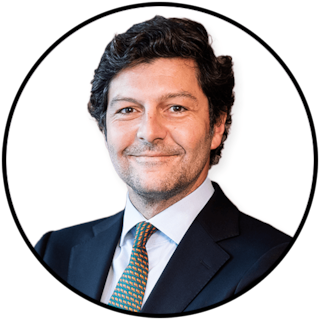Financing the future: we need to rethink the way we invest
André Themudo | BlackRock
Develops relationships with Spanish, Portuguese and Andorra asset managers, private and retail banks, family offices and distribution platforms. This includes the distribution of Mutual Funds, Indexing Strategies and Investment Solutions for wealth clients.
January 2025 by André Themudo
The world has changed since 2020 and we are no longer living through the usual economic cycle. There are also four issues that could impact market performance: AI evolution, long-term infrastructures, growing fragmentation, need for new diversifiers.
Since 2020, we have maintained that we are not living through the usual economic cycle: artificial intelligence (AI) has been a major market driver, inflation has declined without a slowdown in growth, and typical signs of a recession have failed. Historical trends are being disrupted in real time as transformative forces like the rise of AI redefine economies. The over-response of long-term assets to short-term news highlights how unusual this environment is.
This unique scenario requires a new approach to investing. We identify significant opportunities for investors to capitalize on the waves of transformation we foresee in the real economy. Therefore, our first topic is financing the future.
We believe that capital markets play an essential role in building a vast infrastructure network. We think it is equally necessary to rethink the way we invest. We advocate for investors to focus more on issues than on general asset classes as megatrends transform entire economies. In an environment without a stable long-term trend and with a constantly evolving market, investors should prioritize tactical perspectives. In our opinion, greater portfolio dynamism and a more detailed approach are crucial.
Despite all this, we remain risk-on, based on our confidence in the corporate strength and outperformance of the United States, which benefits most from these megatrends, driving corporate profits. We believe the most likely scenario for the next six to 12 months is US corporate strength, with earnings growth expanding even as the economy slows slightly. This highlights the resilience of corporate profits, even in a context of high interest rates. However, we have identified four issues that deserve special attention, given that they may affect market developments:
- The evolution of AI
While its rapid evolution presents significant opportunities, the path to a complete transformation is still uncertain. Our three-phase model — build, adopt and transform — allows us to track this evolution and adjust portfolios along the way.
- Long-term infrastructure
AI-related construction is creating a massive and immediate need for data centers. At the same time, demand for green infrastructure is soaring as countries and technology companies compete to reduce emissions. Ageing populations in developed markets, increasing urbanization in emerging markets, and the reorganization of global supply chains are shaping emerging infrastructure needs. Private markets could be an important avenue to gain exposure to this growing demand, helping to bridge the gap between massive financing needs and the budgetary constraints of governments facing high levels of public debt.
- Increasing fragmentation
Heightened global tensions are accelerating the restructuring of supply chains and the formation of conflicting geopolitical and economic blocs. Competition between the US and China will intensify in 2025 as tariffs and policies focused on decoupling strategic sectors accelerate, especially with regard to advanced technologies such as semiconductors. Emerging markets are key suppliers of commodities such as copper, which are needed to transition to a low-carbon economy. They are also growing markets for exports, which highlights their potential influence on geopolitics.
- Need for new diversifiers
The erratic correlation between stock and bond yields has defined the new system, and as a result, Treasuries have become a less reliable buffer against stock declines. There is potential for other diversifiers to emerge, both traditional ones like gold and new ones like Bitcoin. It is not about replacing long-term bonds to find diversification, but about looking for new and different sources of risk and return. We believe it is essential to track how these alternatives perform in relation to traditional asset classes and to be agile when using them.


